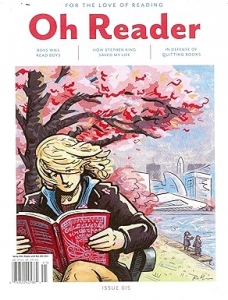Do Your Titles Encourage Ear Reading?

“We actually we read with our ears and our eyes, so we need to activate multiple senses,” the Integrated Learning Academy points out. In fact, as Psychology Today explains, “we don’t experience our senses individually. Rather, our brain meshes with our vision and hearing to create our conscious experience of the world.”
In reading through my copy of Kiplinger Personal Finance May 2025 issue this morning, I saw many illustrations of the power titles have to “catch” readers’ attention through sound.
In alliteration, a consonant sound is repeated. The words don’t need to be directly next to each other in the sentence, but when you read the line aloud, you “hear” the repetition. Three examples I noticed right away in the magazine were:
- Staff Cutbacks reach the Social Security Administration
- Walmart Woos Wealthy Shoppers
- A Broad Bet on Innovation
The repeated sound can be a vowel, rather than a consonant; the term for that is “assonance”. In both these Kiplinger titles, the repeated sound is the “a”.
- A Cap on Overdraft Fees Faces the Axe
- Get Back on Track After a Divorce
Of course, I didn’t need to peruse that financial news publication in order to find alliteration and assonance – they’re everywhere. The title of an advertisement for children’s clothing at the Lunch Money Boutique, “Elevating Style and Celebrating Childhood” catches our ear with those “short E” and “long A” sounds. Many popular consumer product names are alliterative (think Coca-Cola, Dunkin’ Donuts, PayPal).
As content creators, we teach at Say It For You, we can take advantage of the sounds of words to make titles of posts and articles more “catchy”, tempting readers to use both their ears and their eyes to engage with our messages.
Take time to create titles that encourage ear reading!





Follow us online!